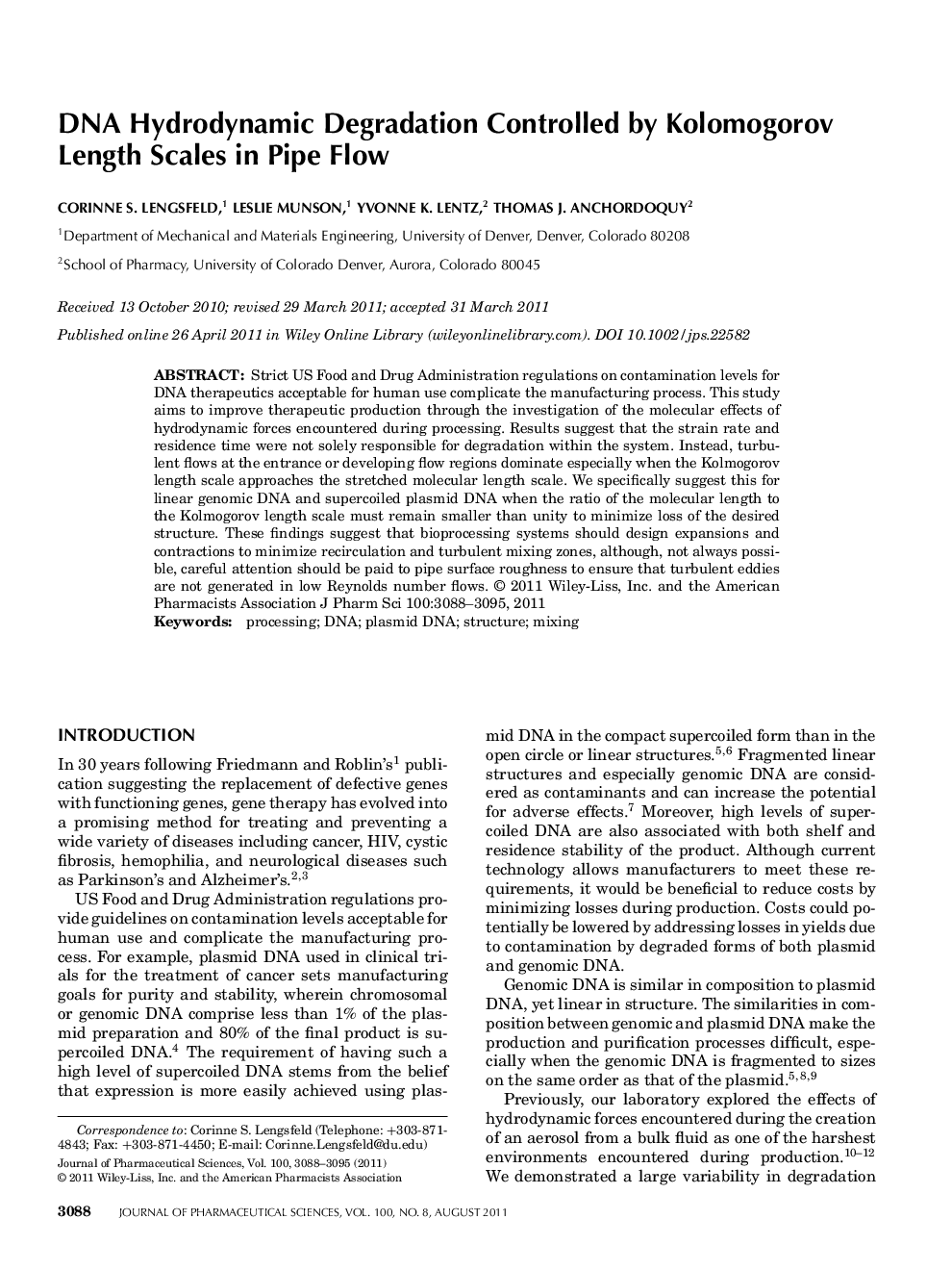| Article ID | Journal | Published Year | Pages | File Type |
|---|---|---|---|---|
| 2486327 | Journal of Pharmaceutical Sciences | 2011 | 8 Pages |
Abstract
Strict US Food and Drug Administration regulations on contamination levels for DNA therapeutics acceptable for human use complicate the manufacturing process. This study aims to improve therapeutic production through the investigation of the molecular effects of hydrodynamic forces encountered during processing. Results suggest that the strain rate and residence time were not solely responsible for degradation within the system. Instead, turbulent flows at the entrance or developing flow regions dominate especially when the Kolmogorov length scale approaches the stretched molecular length scale. We specifically suggest this for linear genomic DNA and supercoiled plasmid DNA when the ratio of the molecular length to the Kolmogorov length scale must remain smaller than unity to minimize loss of the desired structure. These findings suggest that bioprocessing systems should design expansions and contractions to minimize recirculation and turbulent mixing zones, although, not always possible, careful attention should be paid to pipe surface roughness to ensure that turbulent eddies are not generated in low Reynolds number flows. © 2011 WileyâLiss, Inc. and the American Pharmacists Association J Pharm Sci 100:3088-3095, 2011
Related Topics
Health Sciences
Pharmacology, Toxicology and Pharmaceutical Science
Drug Discovery
Authors
Corinne S. Lengsfeld, Leslie Munson, Yvonne K. Lentz, Thomas J. Anchordoquy,
